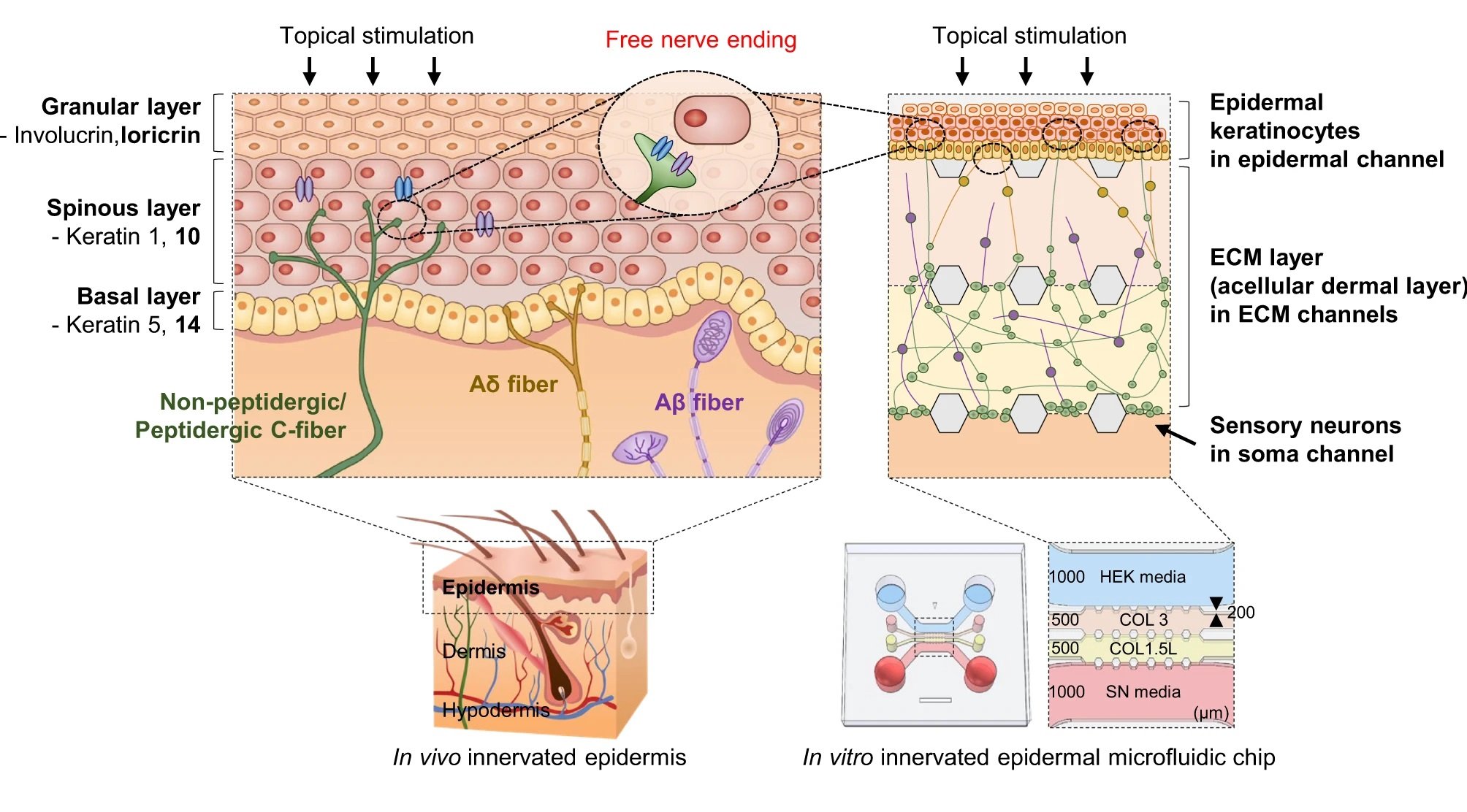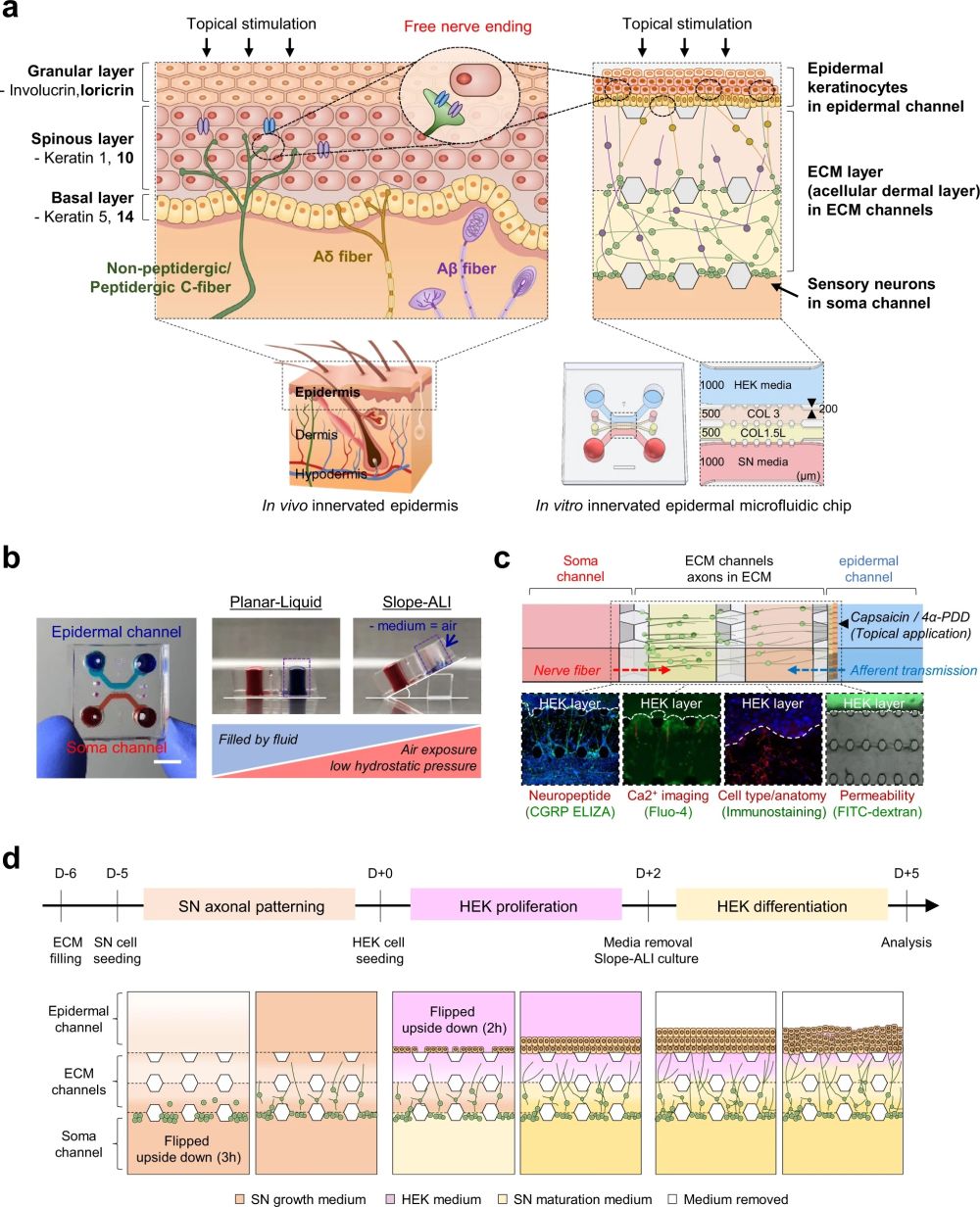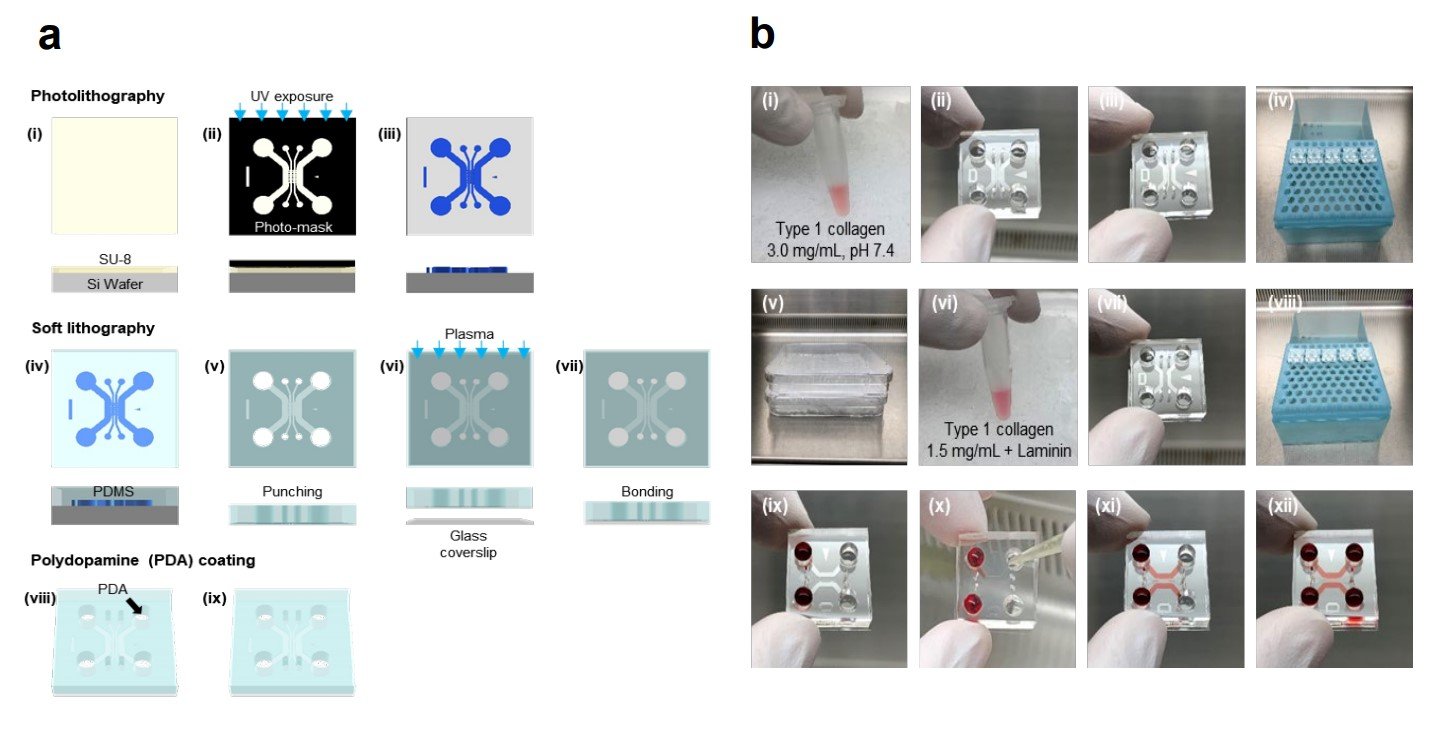
18 May Microfluidics at the Forefront of Skin Research
Skin, our body’s largest organ, provides us with an intricate network of sensory nerve fibers, enabling the sensation of touch, temperature, and pain. The conversation between skin cells and nerves is a critical part of skin health and disease, making the development of reliable in vitro models, which can simulate these interactions, crucial for both basic research and industrial applications.
Traditionally, 2D culture systems have struggled to replicate the spatial complexity and selective analysis of these skin-nerve interactions. Thankfully, a recently published study has shown significant advancements in this area using the power of microfluidics and microfabrication technologies. The researchers created a microfluidic chip that supports the growth and analysis of a three-dimensional innervated epidermal keratinocyte layer—a breakthrough that might just redefine the future of skin research.
“Our co-culture model recapitulates a more organized basal-suprabasal stratification, enhanced barrier function, and physiologically relevant anatomical innervation and demonstrated the feasibility of in situ imaging and functional analysis in a cell-type-specific manner, thereby improving the structural and functional limitations of previous coculture models. This system has the potential as an improved surrogate model and platform for biomedical and pharmaceutical research. “, the authors explained.
Taking Skin-Nerve Interactions to New Heights
In microfabricating a microfluidic device to study skin-nerve interactions, the research team had to ensure that the conditions inside the chip resembled the natural environment of the cells as closely as possible. To achieve this, they utilized a technique called slope-air liquid interface (slope-ALI) culture. The slope-ALI culture method allows cells to grow in an air-liquid interface environment, critical for the differentiation of epidermal cells.
With the new microfluidic chip, the researchers observed enhanced keratinocyte development, superior cell layering, and improved barrier function compared to conventional microfluidic chip systems. This model promises a more in-depth exploration of skin-nerve communication and their potential role in pathological conditions, offering a boon to biomedical and pharmaceutical research.

“a Schematic illustration and design of human skin anatomy (left) and the innervated epidermal chip to coculture sensory neurons and keratinocytes (right). Schematic design of the innervated epidermal chip compartments (right lower). HEK; human keratinocyte, SN; sensory neuron, COL 3; collagen I at 3 mg/ml concentration, COL 1.5 L; collagen I at 1.5 mg/mL with 10% laminin, Scale unit; μm. b Top view of the microfluidic chip (left) and experimental concept of slope-based air-liquid interface (ALI) method for epidermal development (right, longitudinal vertical section view). Each cell channel was marked with a different color dye. c Cell-type-specific assays for the innervated epidermal chip. d Experimental workflow of cell seeding and culture for generating the innervated epidermal chip.” Reproduced from Ahn, J., Ohk, K., Won, J. et al. Modeling of three-dimensional innervated epidermal like-layer in a microfluidic chip-based coculture system. Nat Commun 14, 1488 (2023). under Creative Commons Attribution 4.0 International License.
Results: A High Fidelity Skin-Nerve Model
The study’s results offer an exciting glimpse into the potential of microfluidics in skin research. By using the chip, researchers successfully demonstrated the interaction between sensory neurons and epidermal keratinocytes in 3D. In addition, the chip enabled various imaging, biochemical, and functional analyses directly on the innervated epidermis-on-chips.
In conclusion, the advent of the microfluidic chip and its demonstration of skin-nerve crosstalk is a significant leap forward in skin research. By providing a physiologically relevant model, this technology could revolutionize our understanding of skin diseases and expedite the development of new treatments.

Schematic diagram of the fabrication and gel-filling process of the microfluidic chip. a. Fabrication process. A microfluidic device incorporating hydrogel was fabricated from PDMS (Sylgard 184; Dow Chemical, Midland, MI, USA) cured on a SU-8 patterned silicon wafer by conventional soft lithography. Cured PDMS was cut, and holes were constructed with a biopsy punch to form the device, which was autoclaved at 120 °C for 20 min followed by overnight drying at 80 °C. The PDMS device and a cover glass were bonded together by oxygen plasma treatment (Femto Science, Yongin, Korea). The microchannels were coated with 2 mg/ml polydopamine (PDA) solution for 2 h at 25 °C, washed with distilled deionized water, and dried overnight at 80 °C to render the channel surface hydrophobic. The dimensions of the microfluidic device are illustrated in Fig. 1a. b. Gel-filling procedure. PDA-coated microfluidic devices were prepared before the gel-filling procedure. Type I collagen solution (3.0 mg/ml, pH 7.4) was prepared on ice. The keratinocyte channel side gel channel was filled with the type I collagen solution and placed in the pre-warmed humid chamber containing sterilized DI water and incubated under 5% CO2 at 37 °C for 30 min for gelation. For the subsequent gel filling step, a preprepared mixture of collagen (1.5 mg/ml, pH 7.4) and laminin was filled in the sensory neuron-side gel channel and gelled in the same manner. Each cell channel was filled with media of each cell.” Reproduced from Ahn, J., Ohk, K., Won, J. et al. Modeling of three-dimensional innervated epidermal like-layer in a microfluidic chip-based coculture system. Nat Commun 14, 1488 (2023). under Creative Commons Attribution 4.0 International License.
“We hope to provide insights on the future integration of these skin models with other cell components onto microfluidic platforms as well as potential readout technologies for high-throughput drug screening. We also hope to prolong the culture period to allow keratinocytes to reach a higher level of maturity, reaching the epidermis layer with IB4+ nerve fibers deeply localized in the granular layer. “, the authors explained.
Figures are reproduced from Ahn, J., Ohk, K., Won, J. et al. Modeling of three-dimensional innervated epidermal like-layer in a microfluidic chip-based coculture system. Nat Commun 14, 1488 (2023). https://doi.org/10.1038/s41467-023-37187-4 under Creative Commons Attribution 4.0 International License.
Read the original article: Modeling of three-dimensional innervated epidermal like-layer in a microfluidic chip-based coculture system


